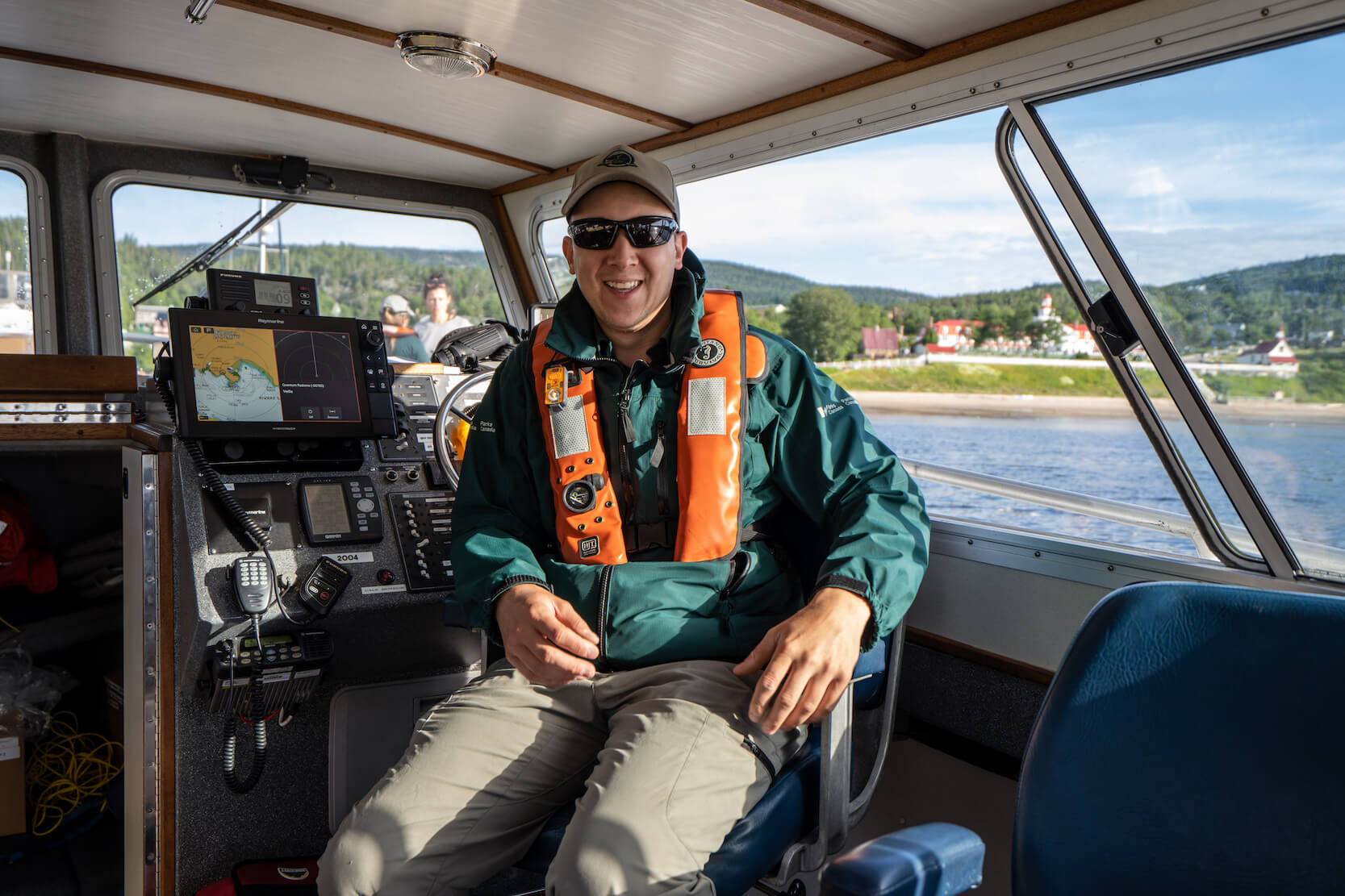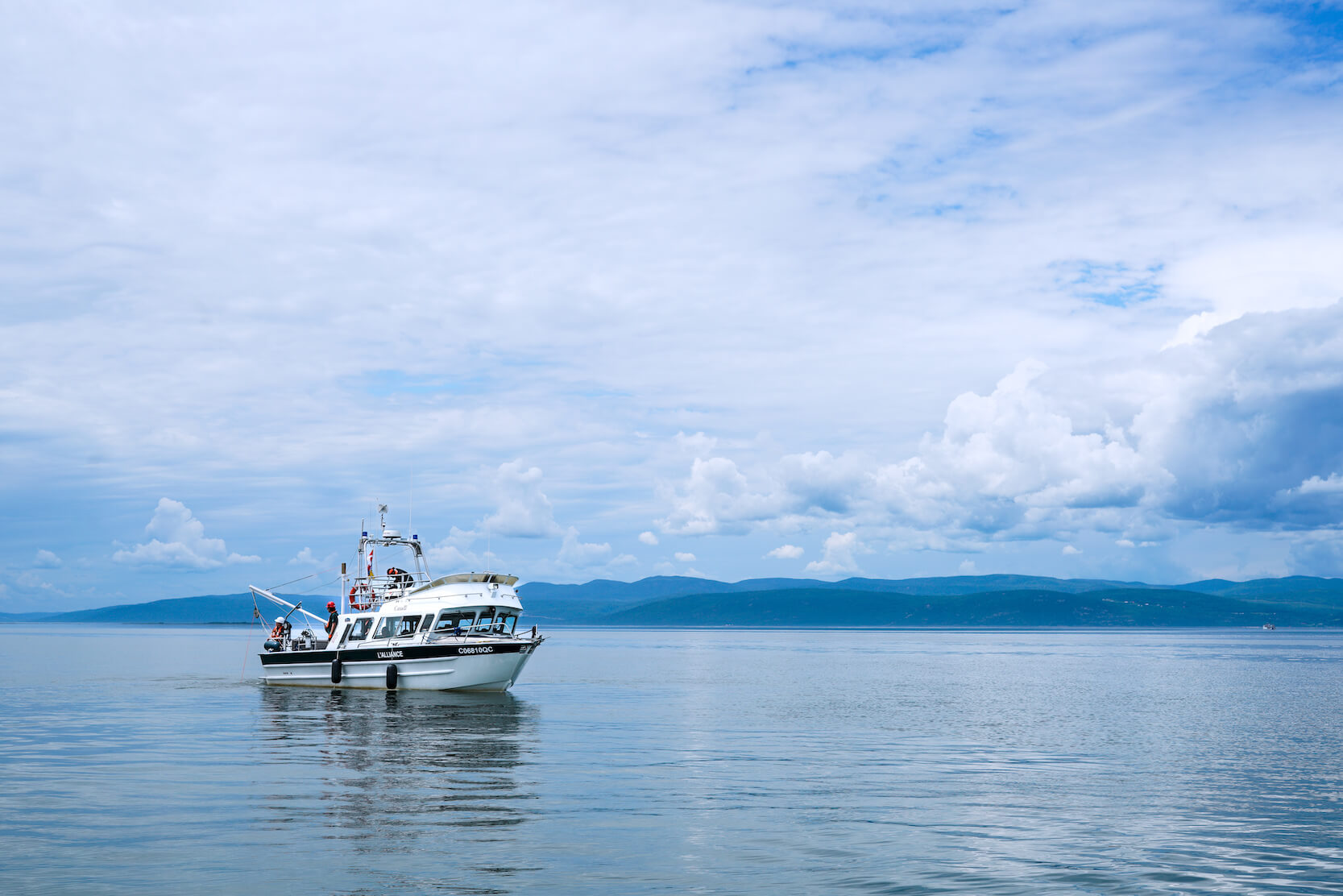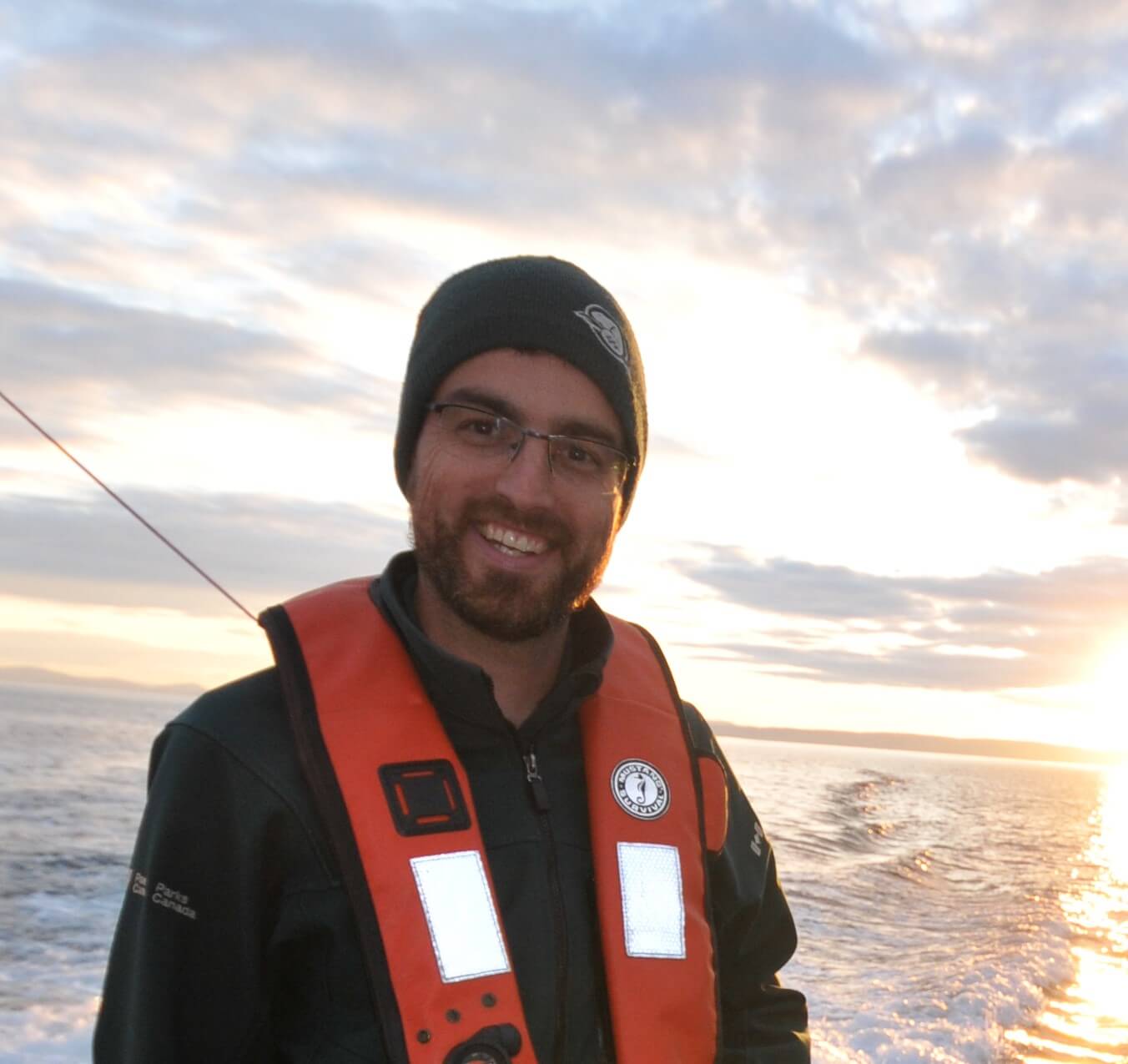The week of July 11 to 15 marked the second year of sampling for our project in collaboration with Fisheries and Oceans Canada to determine the presence of invasive aquatic species in the Saguenay-St. Lawrence Marine Park and adjacent waters.
Any maritime activity such as recreational boating, commercial shipping and fishing is likely to introduce aquatic species into new environments. These species become predators or competitors for local species. Until now, our monitoring has not detected any invasive aquatic species within the Marine Park, but we continue our work using a number of methods to further our understanding and conclude whether or not any such species are present.
For Year 1 of this project, we sampled the Saguenay Fjord. This year, our objective was to cover 5 different sectors of the Upper Estuary: between Anse du Chafaud aux Basques and Baie des Rochers, Saint-Siméon, Cacouna, Passe de l’Île aux Lièvres and Kamouraska.
Planned activities included water sampling at four different depths for environmental DNA and phytoplankton analyses, vertical net hauls for phytoplankton and zooplankton and vertical profiles of physical/chemical conditions (temperature, salinity and oxygen concentration). All this at three sites per sector! This means a multitude of samples to take and lots of material and equipment to transport. The days are going to be busy! On Friday, we load our research vessel L’Alliance in order to be ready to set sail the following Monday.
Unfortunately, the week gets off to a bad start due to inclement weather on Monday morning. Then there’s a mechanical breakdown on the boat. Such are the joys of working on the water! The weather is finally looking good for the next few days and, considering the vast expanse of water to be covered, I figure I will need three days to complete the project. It wasn’t until late Tuesday evening, after some trials in the dark, that we were finally sure we would be able to start sampling the following day.
Our first sampling site is off Cap du Basque near Baie-Sainte-Catherine. It takes us over 2 hours to collect all the data. The first site is always the longest, as we have to finish assembling certain equipment, add a Ty-Rap here, a piece of electrical tape there, adjust the ropes, the weights… Our scientific crew is composed of 4 individuals: Nathalie from Fisheries and Oceans Canada, Eliza-Jane, Nadia and myself, not to mention our captain Simon. It takes us a little while to get accustomed to our roles and responsibilities. My main task is to operate the hydraulic winch and deploy the equipment while following the established methodologies and aiming to reach the correct depths. The day goes smoothly and ends late after we’ve completed two sectors. Mission accomplished!
Thursday, a calm sea awaits us. We head toward Cacouna. The waters in this sector are very turbid and loaded with suspended material, which complicates our job somewhat, though the team is now working like a well-oiled machine! This time we need just under an hour to complete all of our activities. By around 4:30 in the afternoon, we’ve already finished sampling in two sectors. The last one, Kamouraska, is the farthest away. After gauging the motivation of our troops, we decide to continue. Simon prepares the coffee and off we go! Conditions are favourable. By around 7 p.m., the last location has been completed. We then take advantage of the long ride back to download our data and filter the last samples.
For me, this has been quite a memorable week. Although this is my 10th year with the Parks Canada team in the Marine Park, it was the first time I had spent so many intense hours in the Upper Estuary, off the shores of the Bas-Saint-Laurent and Charlevoix regions. Our regular monitoring is more often carried out in the Lower Estuary and the Saguenay Fjord. Over the course of two days, I was able to see belugas, including many youngsters, almost continuously thanks to ideal observation conditions. This sector is also quieter in terms of boat traffic.
For me, this has been quite a memorable week. Although this is my 10th year with the Parks Canada team in the Marine Park, it was the first time I had spent so many intense hours in the Upper Estuary, off the shores of the Bas-Saint-Laurent and Charlevoix regions. Our regular monitoring is more often carried out in the Lower Estuary and the Saguenay Fjord. Over the course of two days, I was able to see belugas, including many youngsters, almost continuously thanks to ideal observation conditions. This sector is also quieter in terms of boat traffic.
What I learned during these days on the water was the importance of staying connected to the field when working in resource conservation so as to never lose sight of the urgency to act and the importance of our actions. I remain convinced that to promote the recovery of the beluga population, it is imperative that we preserve and even enhance the relative tranquility of this sector. It is more than time to expand the protected area of critical beluga habitat in the Upper Estuary!
Next step of our monitoring for invasive aquatic species: the Lower Estuary in July 2023!
Samuel Turgeon
As a kid, Samuel Turgeon spent a lot of time hiking and camping in national parks. Today, it seems only fitting that he contributes to the conservation of natural spaces. Originally from Québec City, Samuel is now based in Tadoussac, where he oversees monitoring programs in the Saguenay-St. Lawrence Marine Park. It is in this capacity that he supervises data collection and analysis and develops monitoring indicators that guide park management: maritime traffic, hydroacoustic surveys, large rorqual monitoring, whale-watching activities, etc.










